About the Spreadtrum SC7731G chipset using the example of a DEXP Ursus NS210 tablet
Hello. Over the past couple of years and until recently, almost all budget tablets from local Russian brands have been supplied with MediaTek chipsets. Rockchip and Allwinner were actually able to get rid of this market, but now MediaTek is destined to face competition from a relatively new player - Spreadtrum. Not that it was completely new, but personally (I personally) drew attention to it at the moment when its solutions were used in Samsung devices — Galaxy Ace NXT, Galaxy Pocket 2, Z1 and Z3 smartphones, and also the Galaxy Tab tablet E. Previously, Koreans had everything strictly - or their own chipsets, or Qualcomm. And here - here you are: some Spreadtrum. There were even rumors that Samsung had invested a certain amount in Spreadtrum, thanks to which the “court” manufacturer of low-end chipsets was getting.

DEXP Ursus NS210
Anyway, I decided to check what the products of this office are in practice, considering that soon they (products, that is, chipsets) may well appear in a whole galaxy of inexpensive tablets. I tested in practice the DEXP Ursus NS210 with Spreadtrum SC7731G - this is such a 10-inch tablet (1280 x 800 pixels) with 1 GB of RAM and 8 GB of internal memory, a pair of cameras (0.3 and 2 megapixels), a 3G modem with the ability to make calls and so on. The device is running the Android 4.4 KitKat operating system, but soon DEXP promises to release the firmware from Android 5.1 Lollipop. This, by the way, is a plus not only for DEXP, but also for Spreadtrum: as you know, to release firmware with a new OS release you need not only the desire of the device manufacturer, but also support from the chip maker. In this case, it appears to be.
I'll start with personal feelings. After running half a dozen benchmarks and an hour in Asphalt 8, the tablet remained barely warm - no hellish heats, which observers periodically complained about with devices on Spreadtrum SC7731G, were not recorded. However, as well as friezes in the chart - subject to the installation of average settings. However, with regard to heat, it is a difficult question - perhaps praise for the "cold temper" of the tablet should not Spreadtrum, as much as DEXP. Still, the lack of heating - it can be a merit of the "cold" processor, and well-designed housing.
')
I’ll say the following about compatibility: I launched Asphalt 8 games on DEXP Ursus NS210 (NWA 3, Modern Combat 5 and some others). Problems with the launch did not arise even once. It is clear that the Spreadtrum SC7731G includes quite standard components from ARM (4 cores ARM Cortex-A7 and graphics Mali-400MP2), which are used, say, in the most popular MediaTek MT6582, and yet. It happened that one or another 3D-games run on one device, but on the other, with the same graphics and core architecture, no longer.
Finally, I will give a selection of results in benchmarks. I can not say that they are amazing - the numbers are about 5-10 percent lower than tablets with MediaTek MT8382 chipset with the same parameters (4 Cortex-A7 and Mali-400MP2 cores), 1 GB of RAM and HD screen .
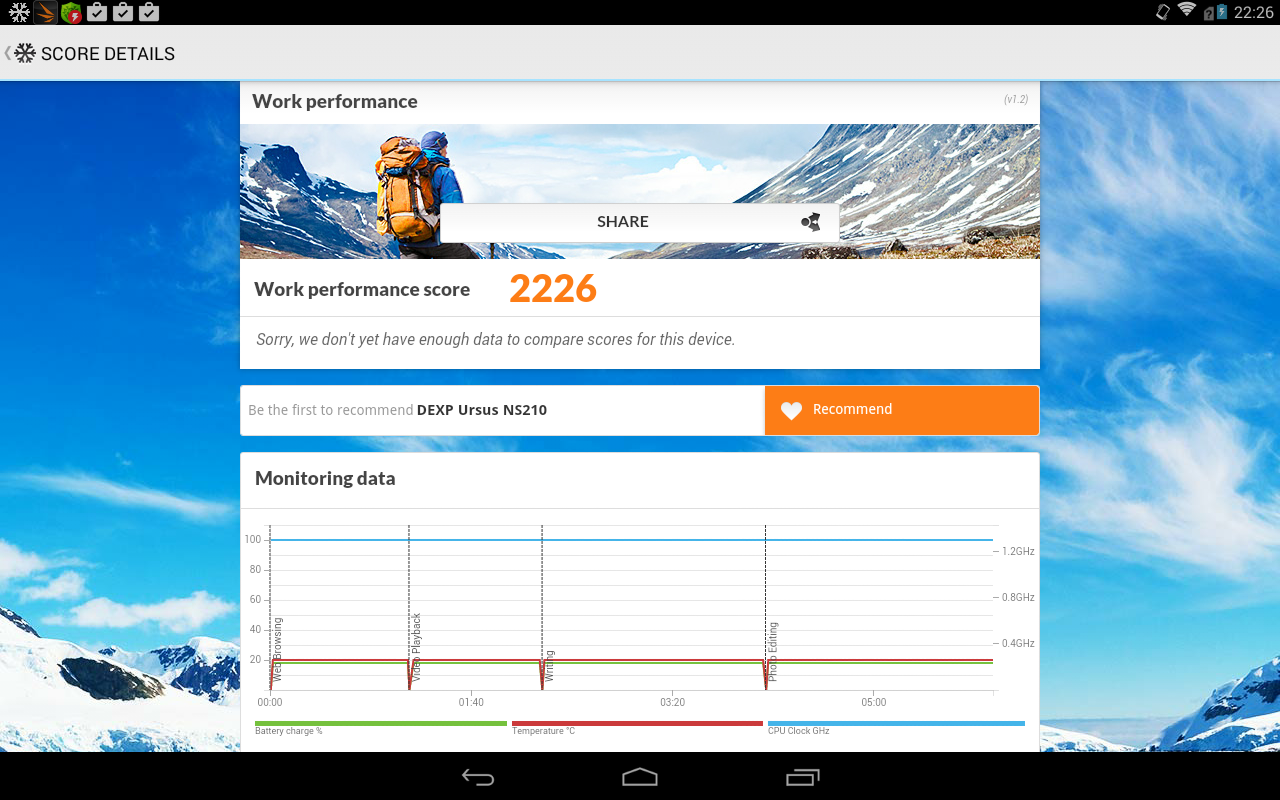
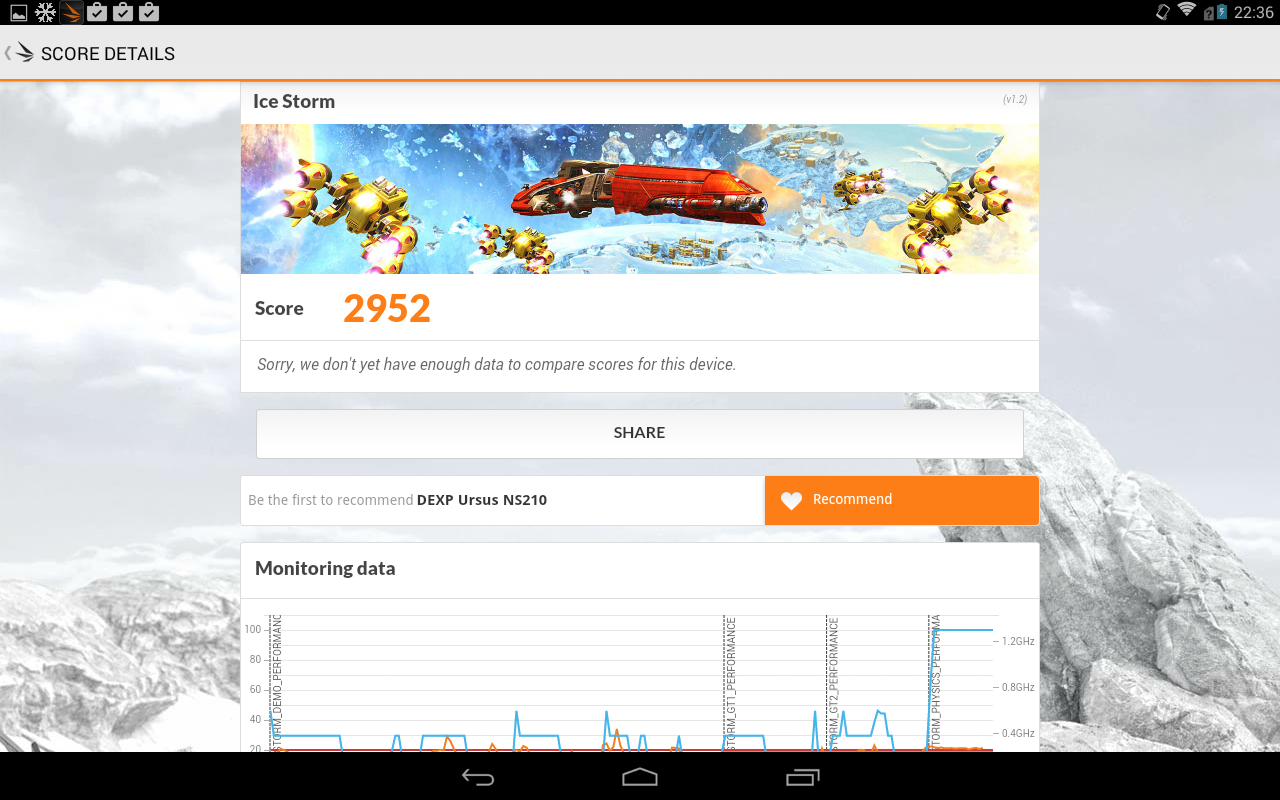


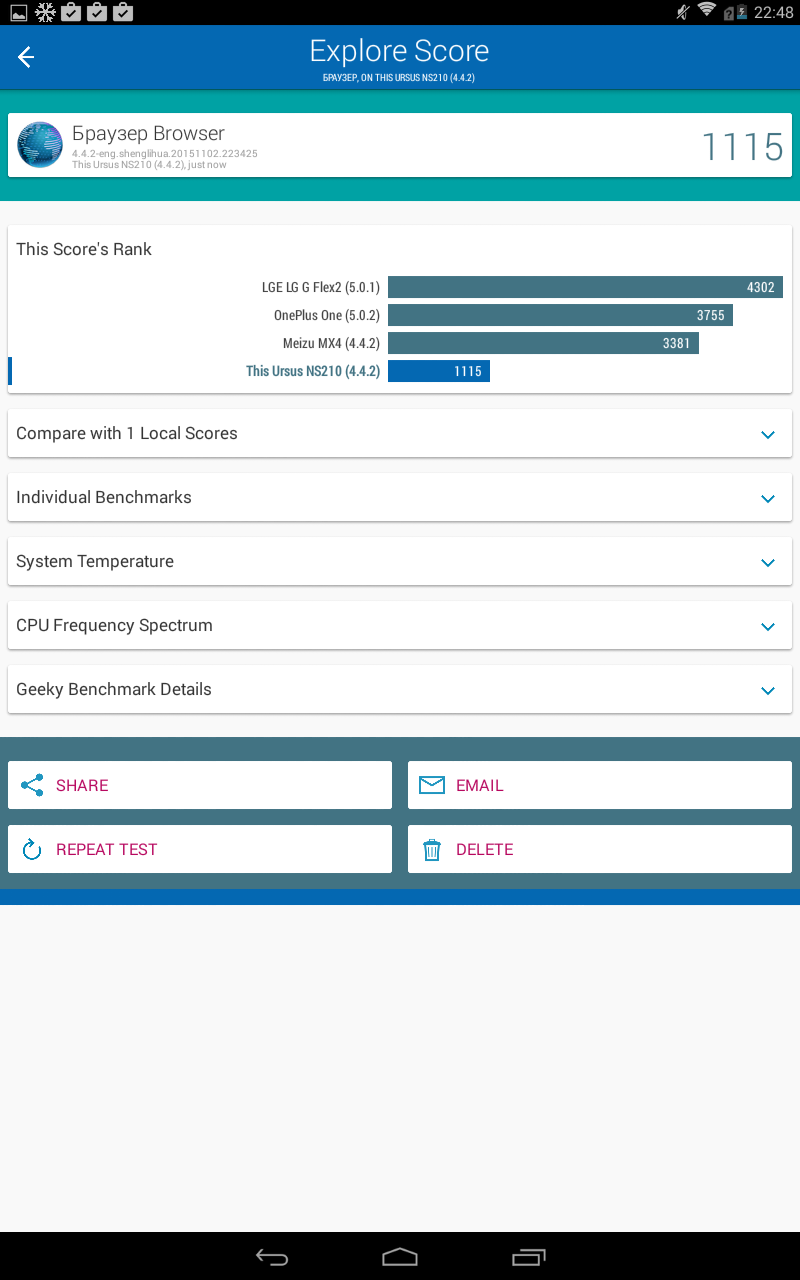

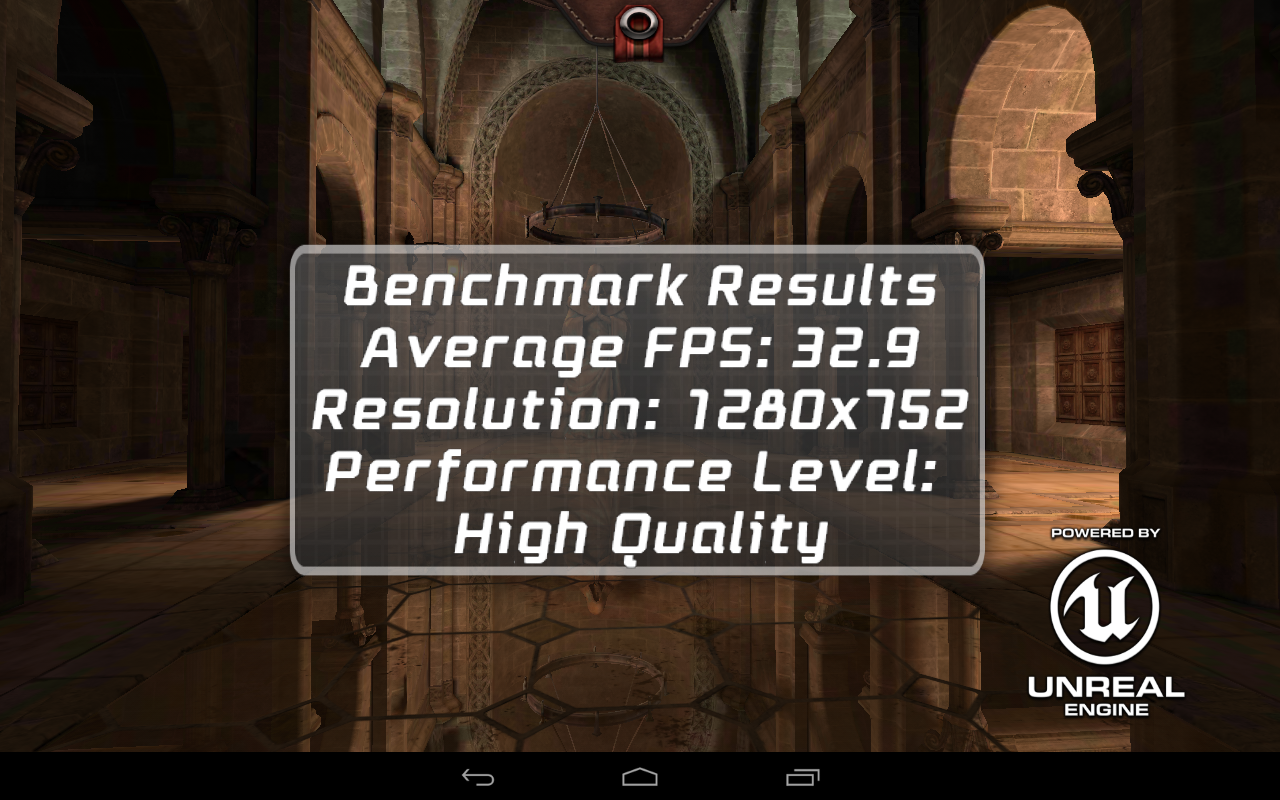
The work of GPS (the corresponding module is part of the chipset) can be evaluated on the four with a minus. Yes, satellites are searched and found, which is far from being achieved in every budget tablet on Android. However, searching for about a dozen satellites and connecting to four of them took more than a minute - this is not the best result on the market. However, I repeat that for an inexpensive tablet this is rather good than bad.
DEXP Ursus NS210 with its Spreadtrum SC7731G costs 6,990 rubles, and the overwhelming majority of MT8382 analogues are around 8,500 (Yandex.Market data). This suggests that the use of the chipset, to which this post is dedicated, has a positive effect on the price of the device. And Spreadtrum managed to occupy its niche.
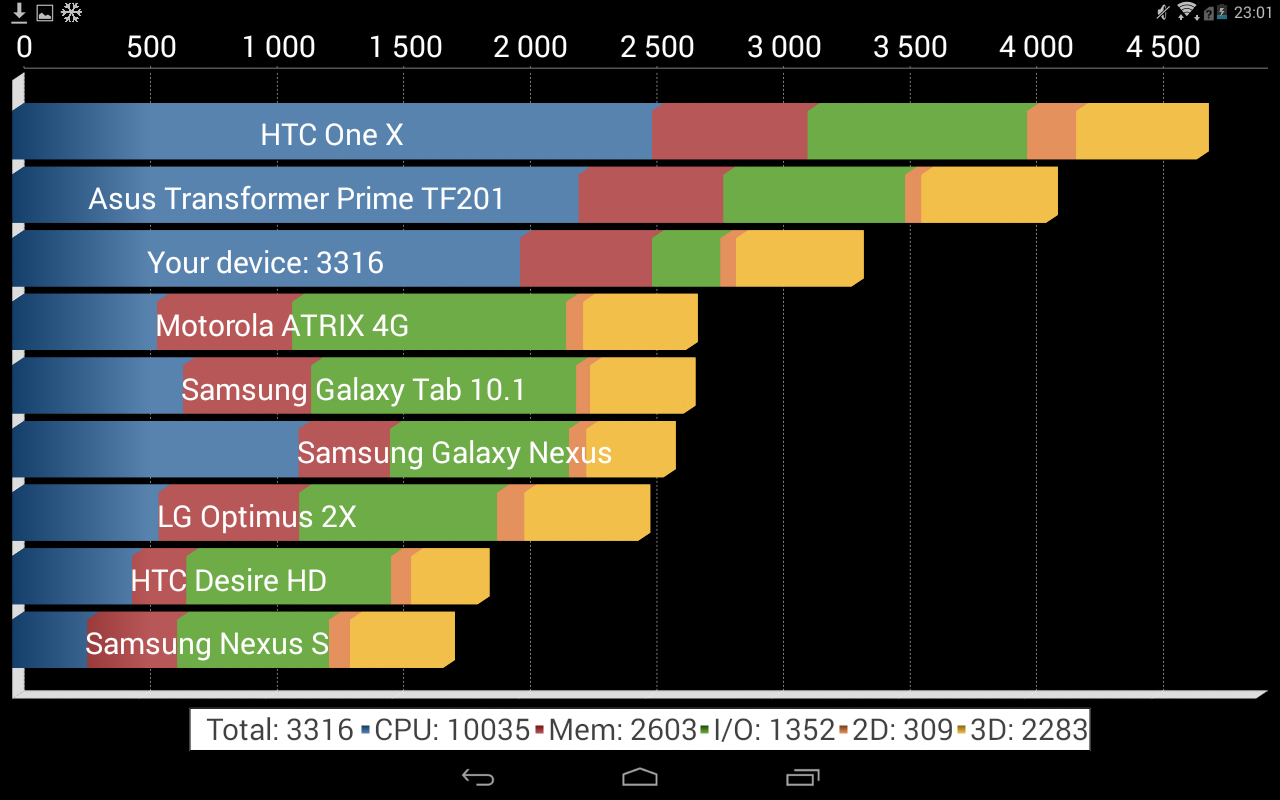

DEXP Ursus NS210
Anyway, I decided to check what the products of this office are in practice, considering that soon they (products, that is, chipsets) may well appear in a whole galaxy of inexpensive tablets. I tested in practice the DEXP Ursus NS210 with Spreadtrum SC7731G - this is such a 10-inch tablet (1280 x 800 pixels) with 1 GB of RAM and 8 GB of internal memory, a pair of cameras (0.3 and 2 megapixels), a 3G modem with the ability to make calls and so on. The device is running the Android 4.4 KitKat operating system, but soon DEXP promises to release the firmware from Android 5.1 Lollipop. This, by the way, is a plus not only for DEXP, but also for Spreadtrum: as you know, to release firmware with a new OS release you need not only the desire of the device manufacturer, but also support from the chip maker. In this case, it appears to be.
I'll start with personal feelings. After running half a dozen benchmarks and an hour in Asphalt 8, the tablet remained barely warm - no hellish heats, which observers periodically complained about with devices on Spreadtrum SC7731G, were not recorded. However, as well as friezes in the chart - subject to the installation of average settings. However, with regard to heat, it is a difficult question - perhaps praise for the "cold temper" of the tablet should not Spreadtrum, as much as DEXP. Still, the lack of heating - it can be a merit of the "cold" processor, and well-designed housing.
')
I’ll say the following about compatibility: I launched Asphalt 8 games on DEXP Ursus NS210 (NWA 3, Modern Combat 5 and some others). Problems with the launch did not arise even once. It is clear that the Spreadtrum SC7731G includes quite standard components from ARM (4 cores ARM Cortex-A7 and graphics Mali-400MP2), which are used, say, in the most popular MediaTek MT6582, and yet. It happened that one or another 3D-games run on one device, but on the other, with the same graphics and core architecture, no longer.
Finally, I will give a selection of results in benchmarks. I can not say that they are amazing - the numbers are about 5-10 percent lower than tablets with MediaTek MT8382 chipset with the same parameters (4 Cortex-A7 and Mali-400MP2 cores), 1 GB of RAM and HD screen .







The work of GPS (the corresponding module is part of the chipset) can be evaluated on the four with a minus. Yes, satellites are searched and found, which is far from being achieved in every budget tablet on Android. However, searching for about a dozen satellites and connecting to four of them took more than a minute - this is not the best result on the market. However, I repeat that for an inexpensive tablet this is rather good than bad.
DEXP Ursus NS210 with its Spreadtrum SC7731G costs 6,990 rubles, and the overwhelming majority of MT8382 analogues are around 8,500 (Yandex.Market data). This suggests that the use of the chipset, to which this post is dedicated, has a positive effect on the price of the device. And Spreadtrum managed to occupy its niche.

Source: https://habr.com/ru/post/371677/
All Articles